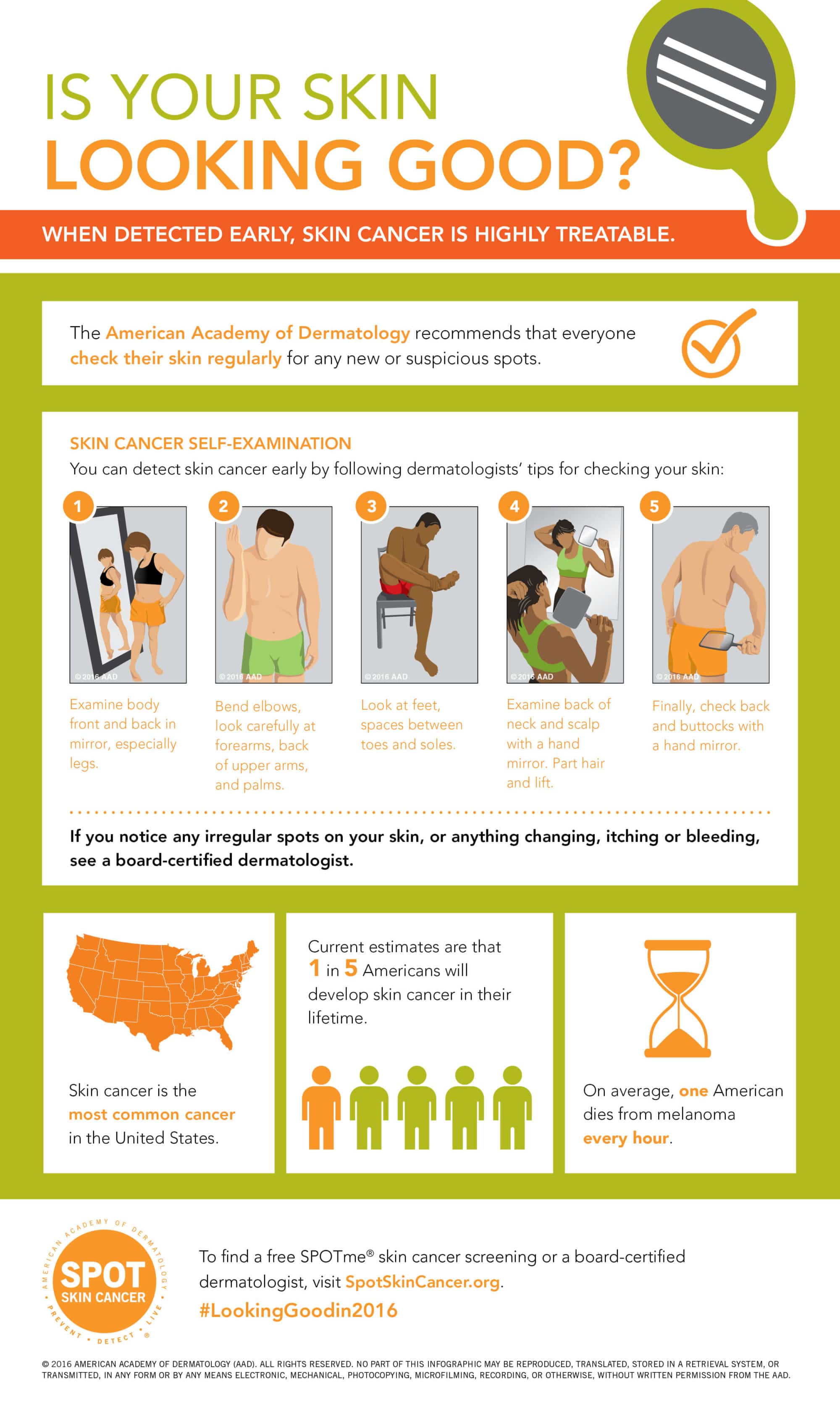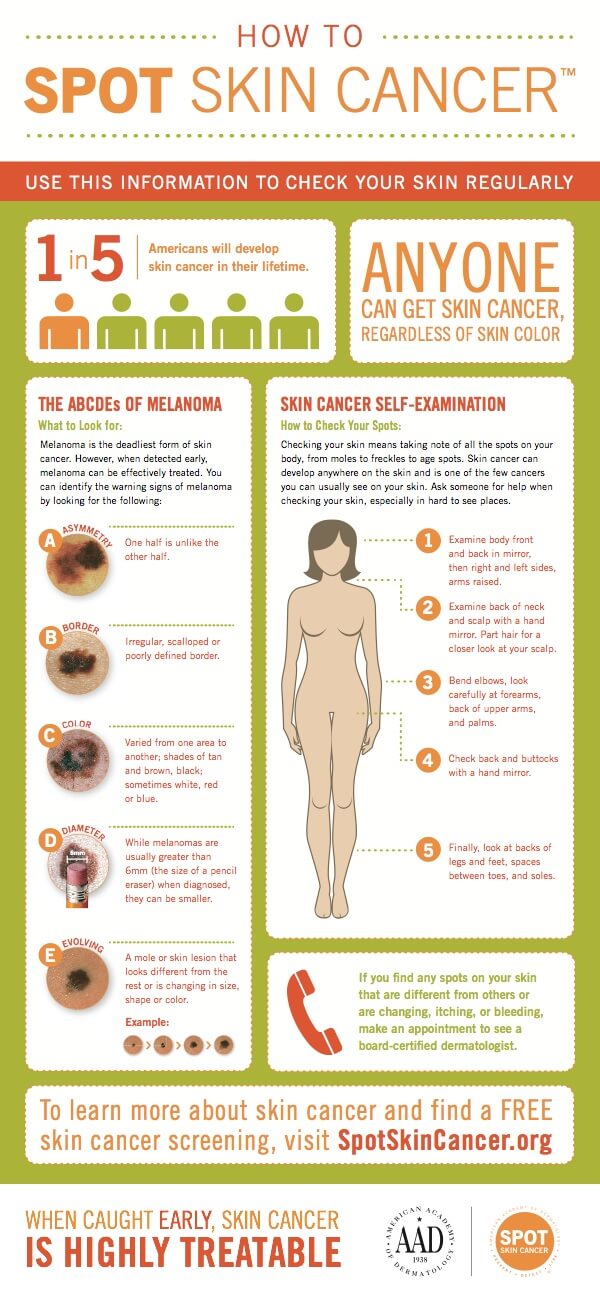This post is about checking your skin for the signs of skin cancer and melanoma, a preventable cancer that is highly treatable when spotted early. Sponsored by the American Academy of Dermatology.
I’ve lost several friends to cancer and cooked for many cancer patients in our community over the past ten years, so when the American Academy of Dermatology asked me to help raise awareness about skin cancer, I didn’t hesitate. Six years ago, I had a mole on the bottom of my foot that looked irregular in shape and seemed to be getting bigger. I had it removed and tested. Thankfully it was non-cancerous, but I am so glad I had it checked out.
Skin cancer is the most common cancer in the United States – one in five Americans will develop skin cancer in their lifetime. The good news is that you can take steps to prevent skin cancer, and it is highly treatable when spotted early.
That’s why I’m sharing two ways to check your skin for the signs of skin cancer to make sure it’s “Looking Good in 2016” and beyond.
- Free skin cancer screenings are offered year-round by the AAD, all across the country. Click here to find a free SPOTme® skin cancer screening location near you.
- Perform a skin self-exam regularly for any new or suspicious spots. If you notice any spots that are different from the others, or anything changing, itching or bleeding on your skin, see a board-certified dermatologist. Click here to learn how to do a skin self-exam.
Take a look at the infographic below from the AAD that shows how to perform a skin cancer self-exam. Click here to download this chart.
Interestingly, men 50+ are at higher risk of melanoma, the deadliest form of skin cancer. My husband is in his 50’s, so after learning about this increased risk, I did my first spot check on him. Many years ago, he had a mole removed from his back, which was non-cancerous, but this was a good reminder to do annual skin checks on him. I strongly encourage men, along with the support of their spouses or loved ones, to check their skin for skin cancer and see a dermatologist if they find any new or suspicious spots.
I’ve had several friends who have had melanomas detected early and successfully removed. The five-year survival rate for people whose melanoma is detected and treated before it spreads to the lymph nodes is 98%.
Here’s a visual to help you identify the warning signs of melanoma. The AAD calls these warning signs the ABCDEs of Melanoma. The mole I had met the criteria of A (asymmetrical) and E (evolving), which is why I went to a dermatologist to get it checked out.
Click here to download the ABCDEs chart.
Skin cancer is a preventable cancer. As someone who has lost several dear friends to cancer, I can’t stress enough the importance of doing whatever you can to make sure your skin is “Looking Good in 2016” and beyond.
Now to give us some comic relief, watch this entertaining video, “Looking Good in 2016” as encouragement for you and your spouse to conduct a self-skin exam. In addition, please submit a photo and answer a few questions here on AAD’s site telling the public what motivates you to check your skin for the signs of skin cancer.
This is a sponsored conversation written by me on behalf of American Academy of Dermatology. The opinions and text are all mine.













This is a great post! I have had family members die of cancer, and a couple (who didn’t die) have skin cancer, so it has definitely opened up my eyes to the reality of how important it is to check yourself! Thanks for the tips!
Emily – thanks for sharing your personal experience with cancer and skin cancer. I didn’t used to take skin cancer as seriously as other types of cancer, but now I realize the importance of checking my skin.